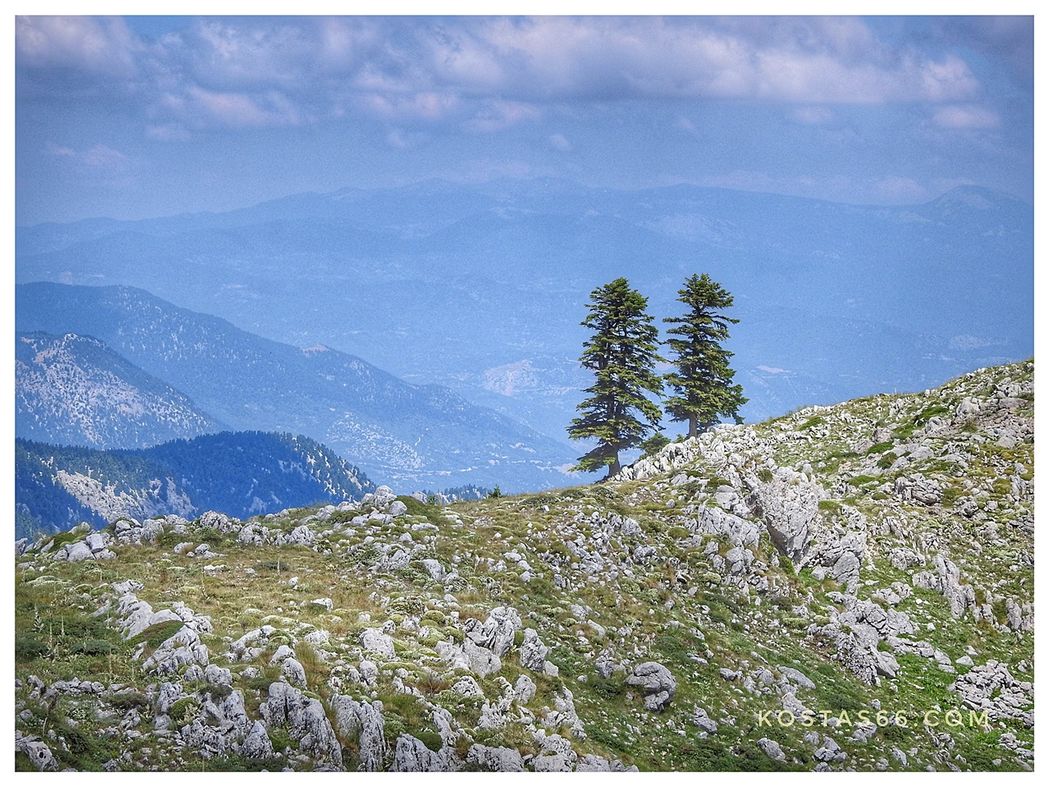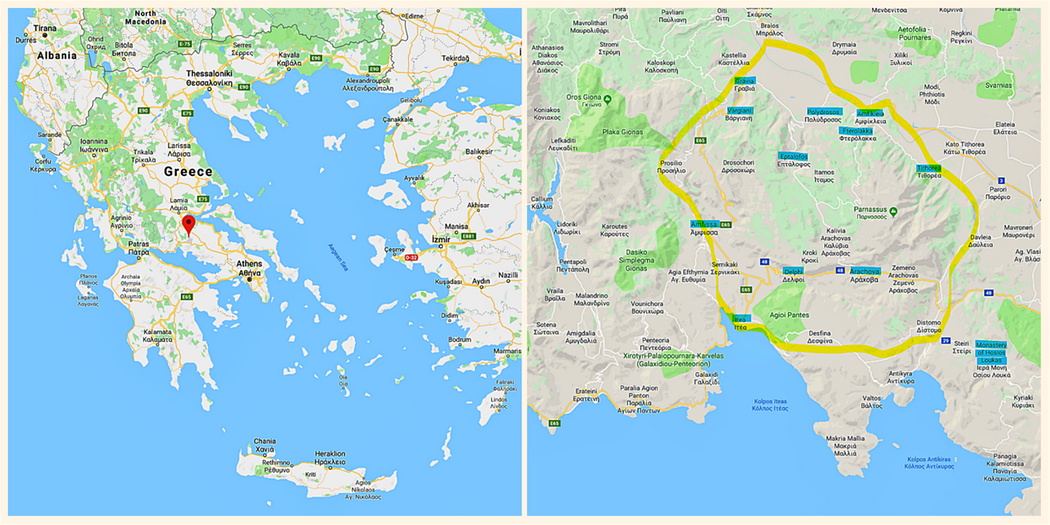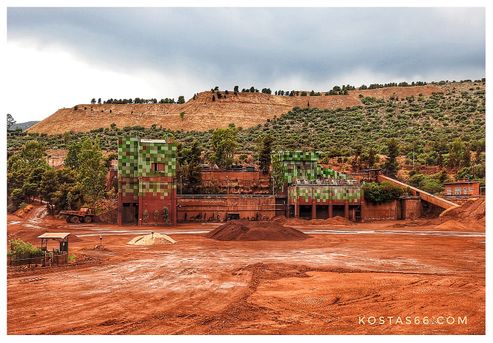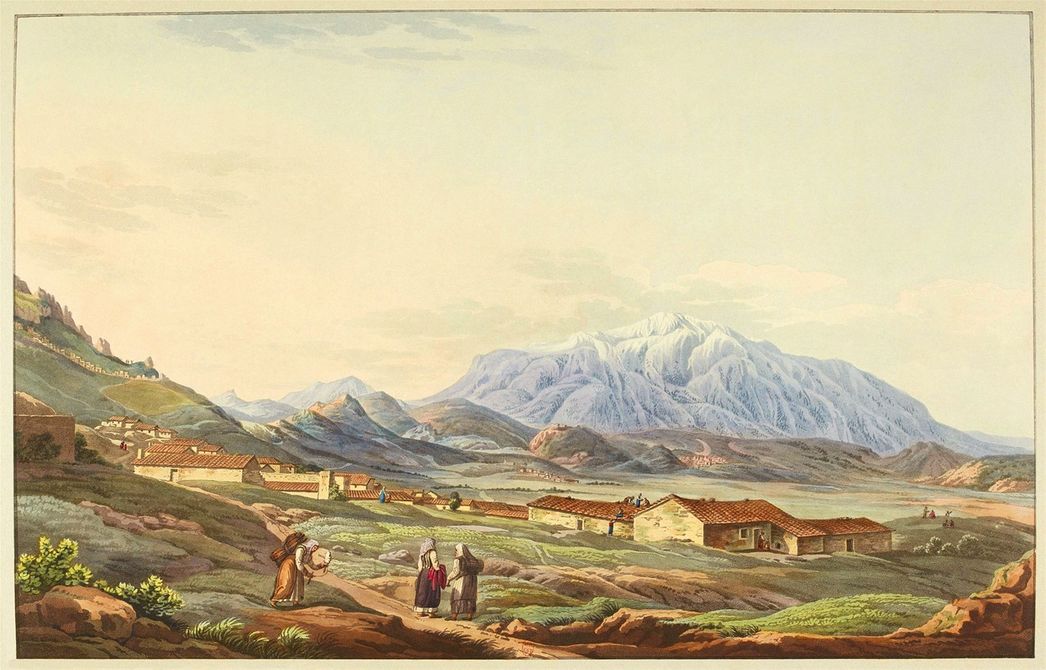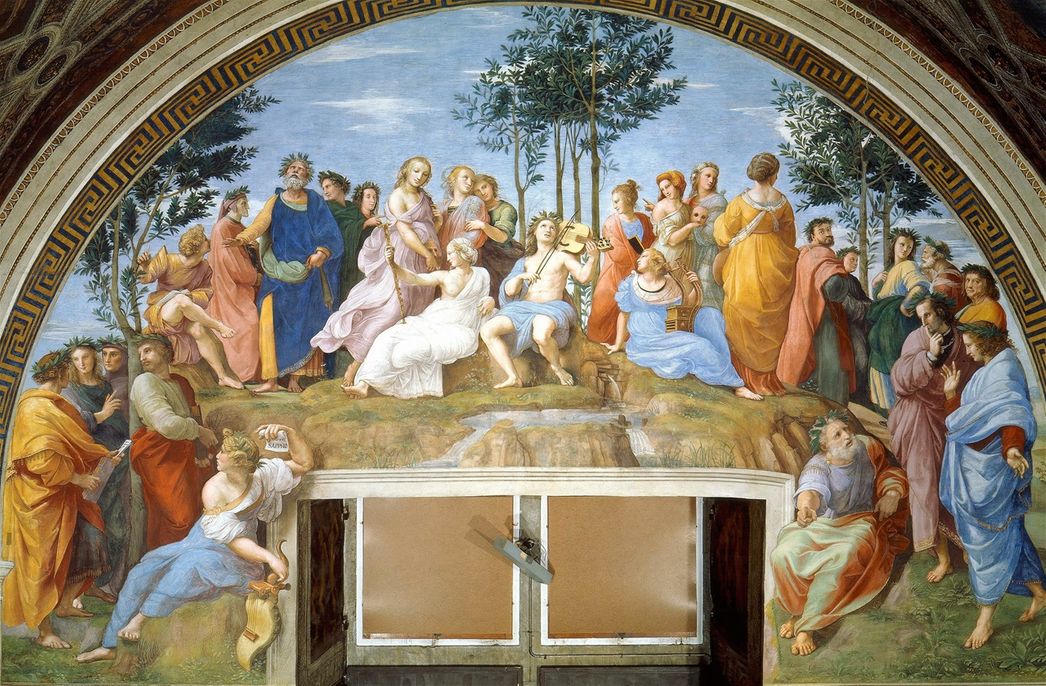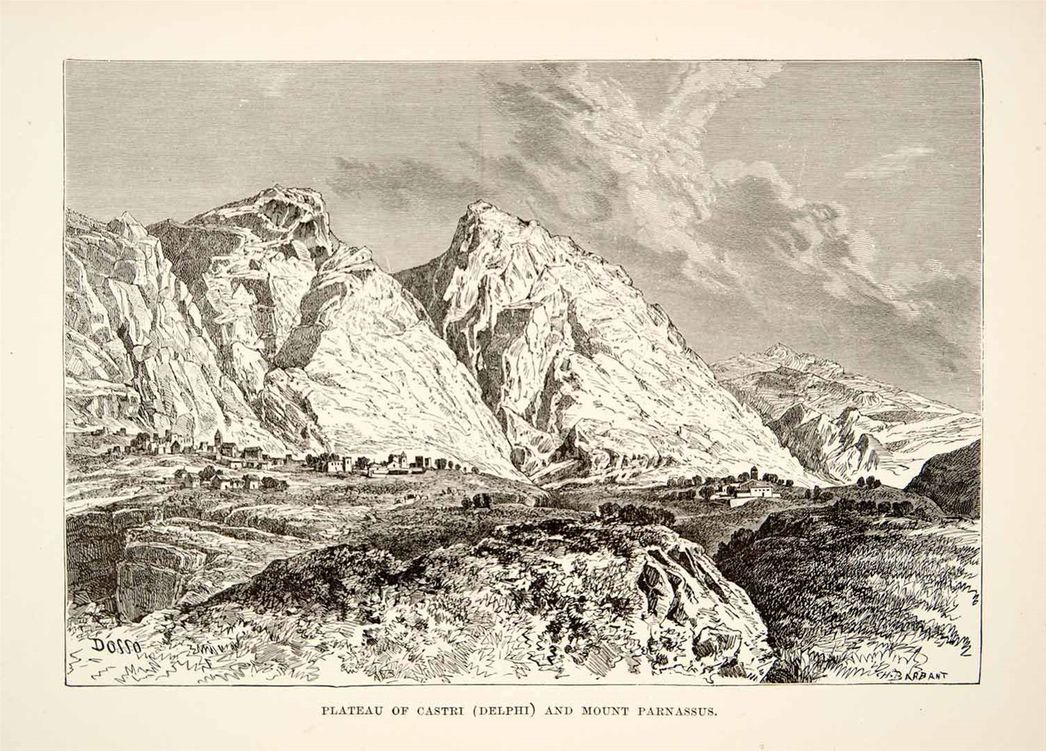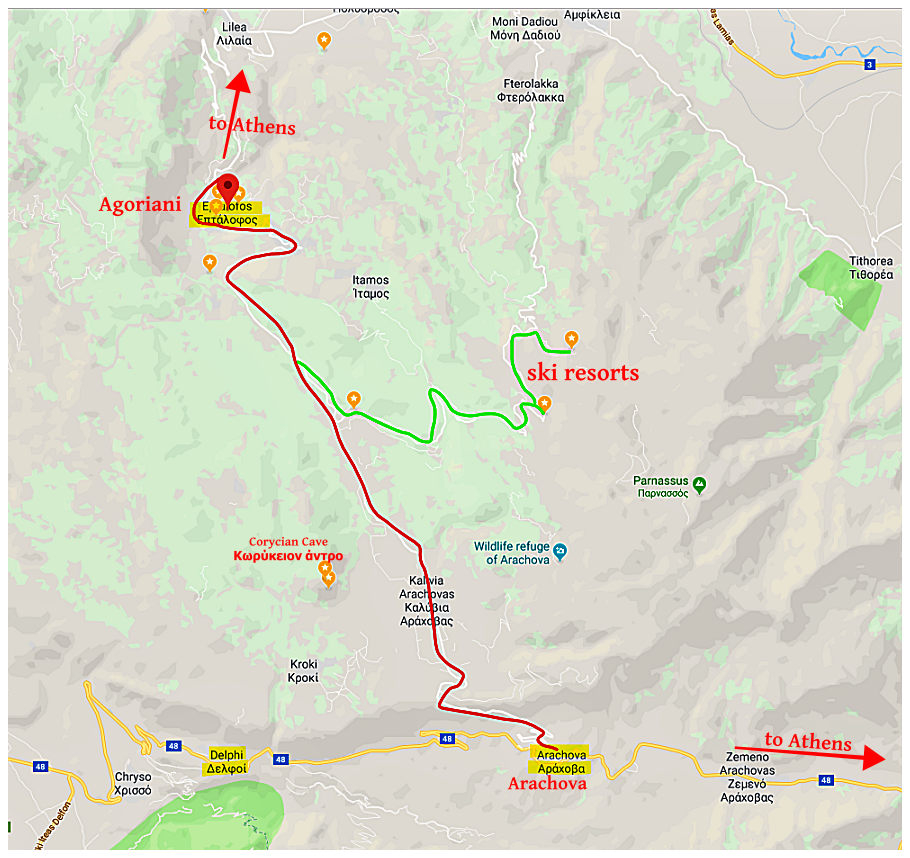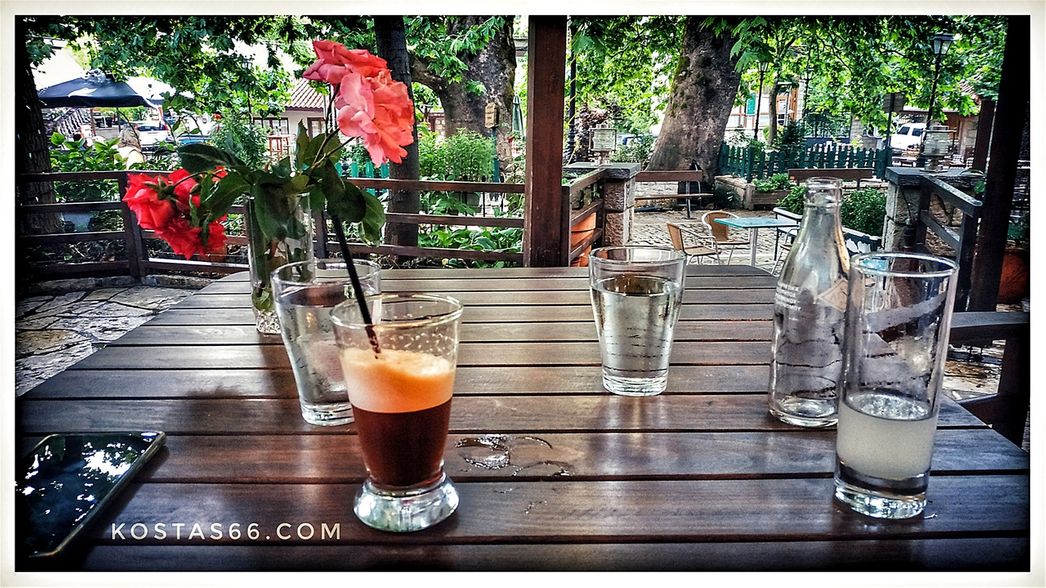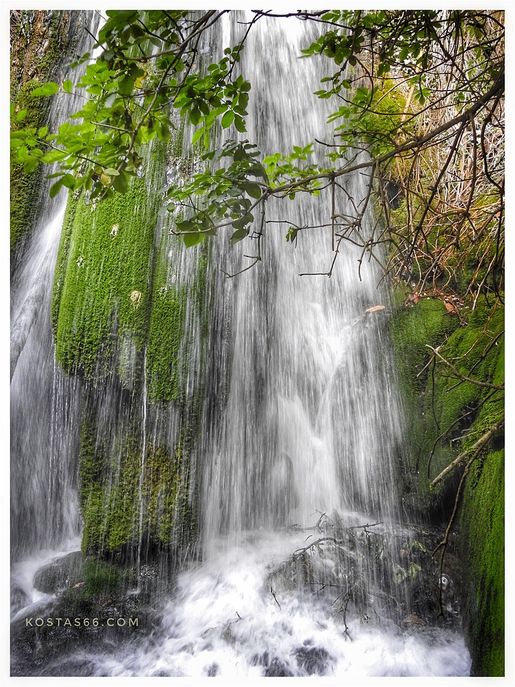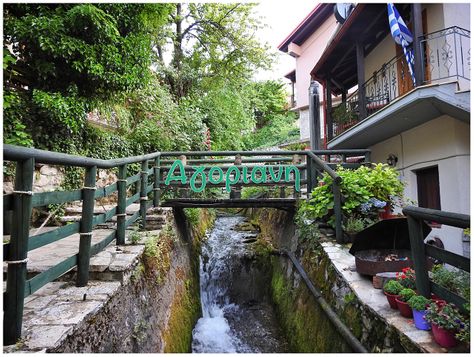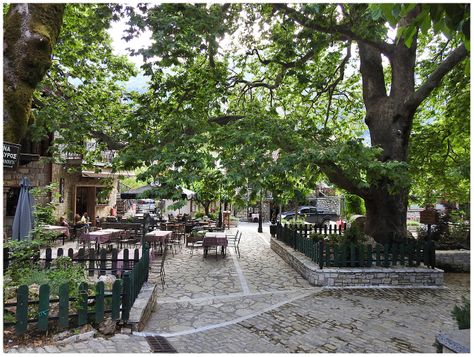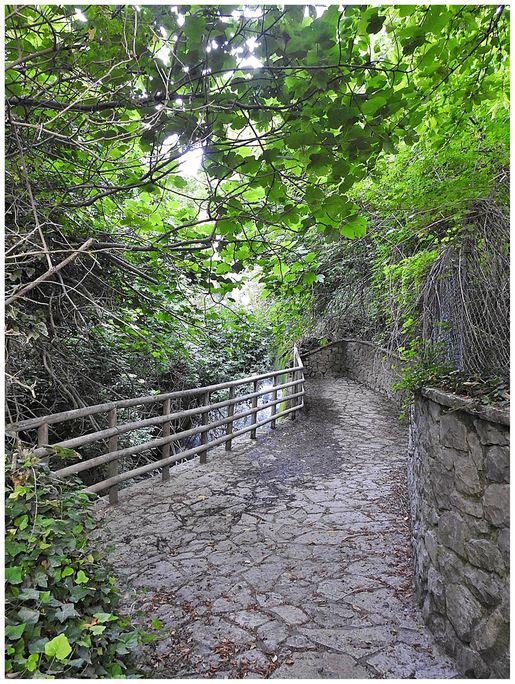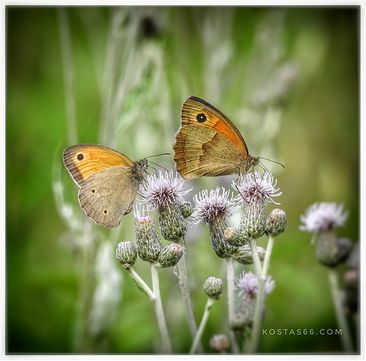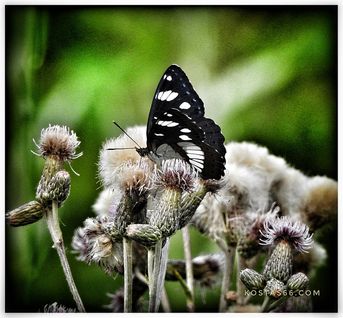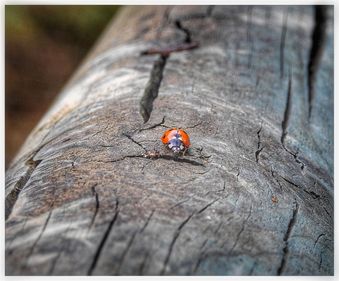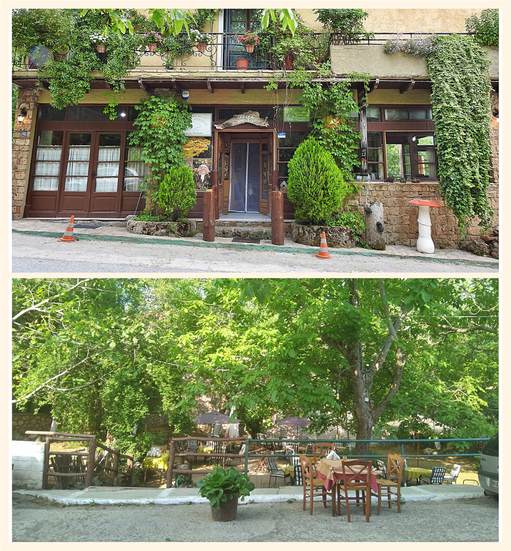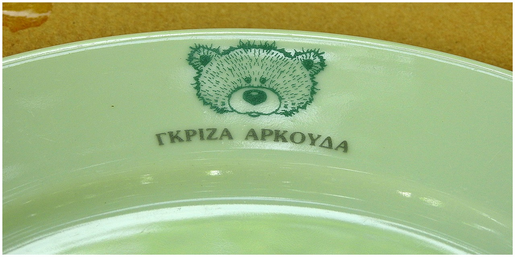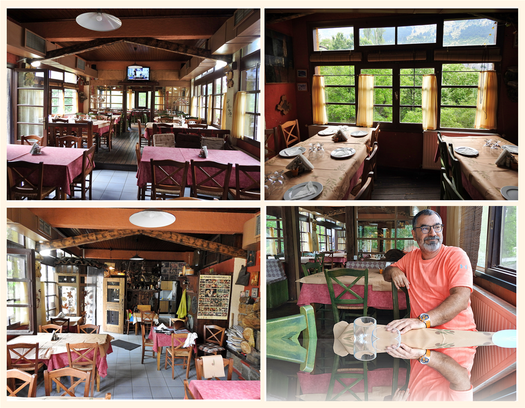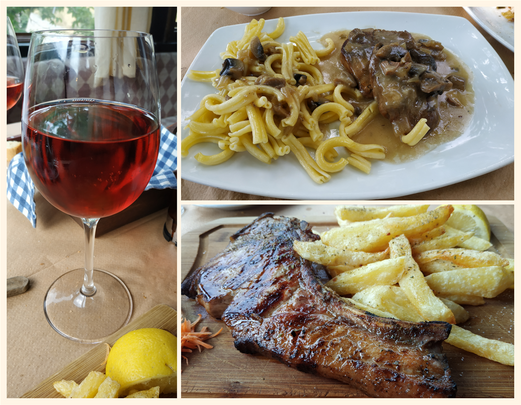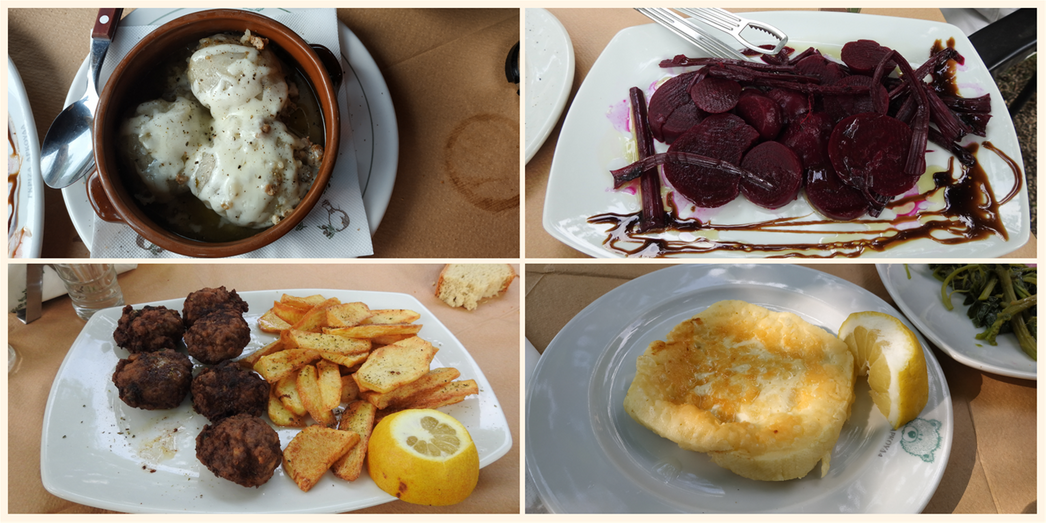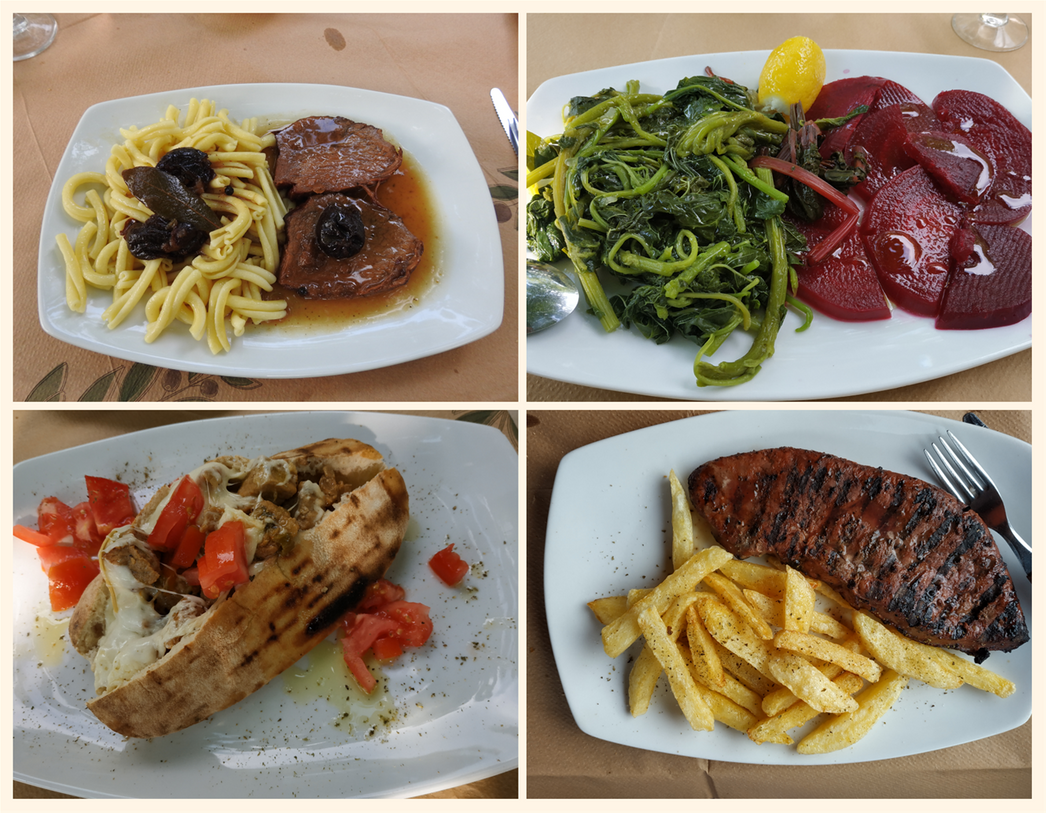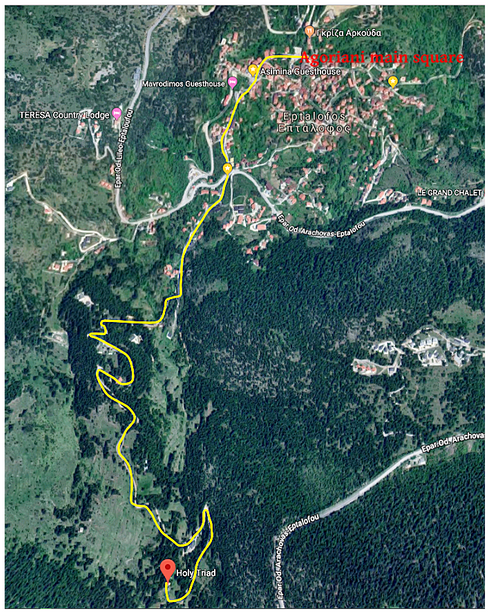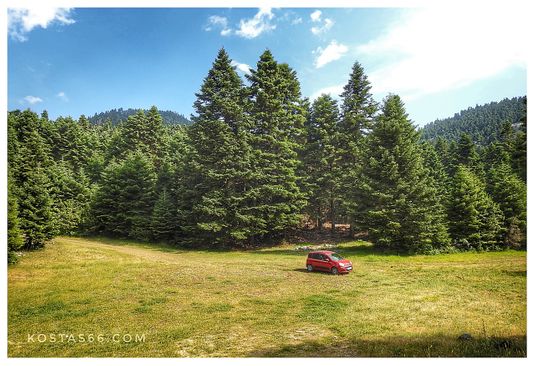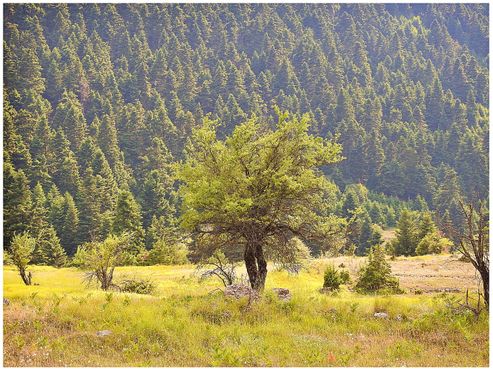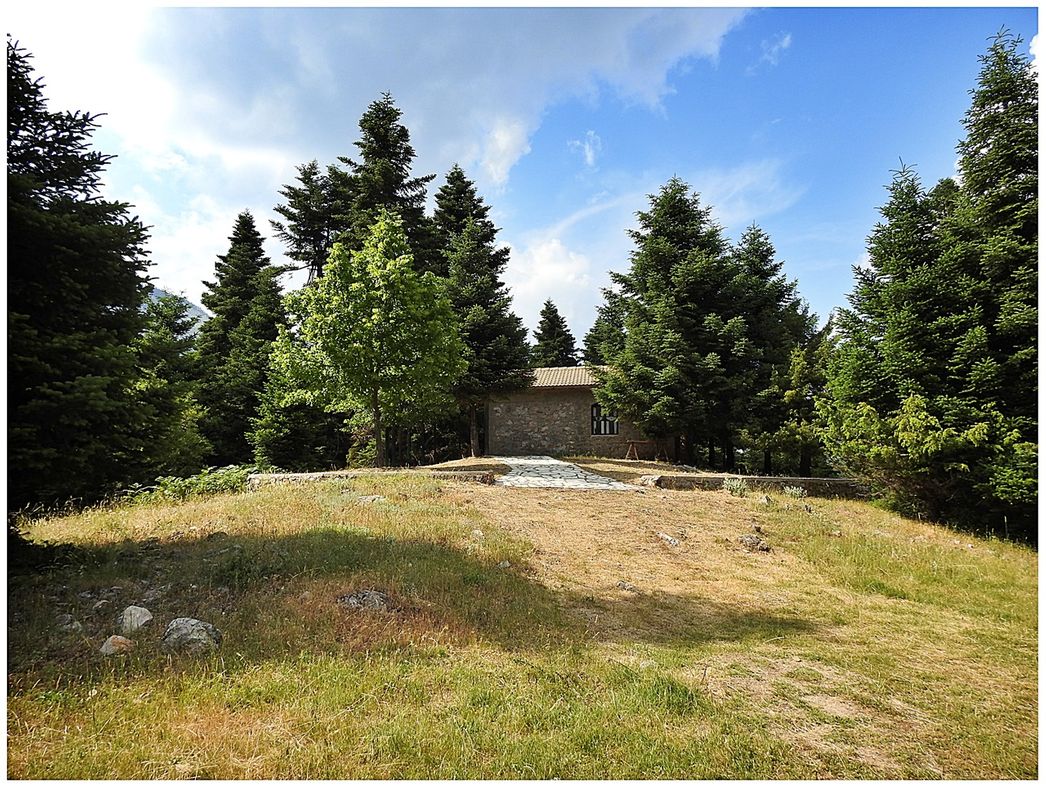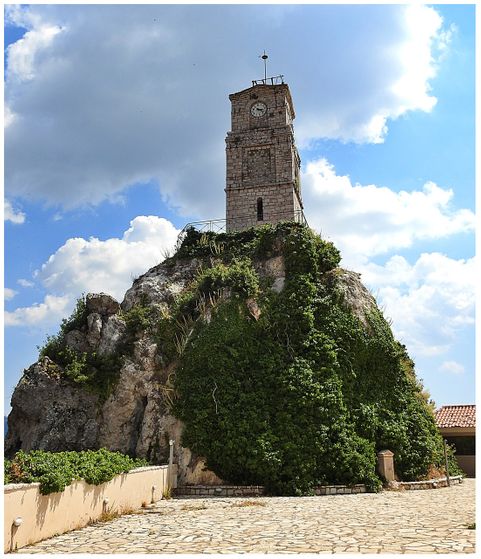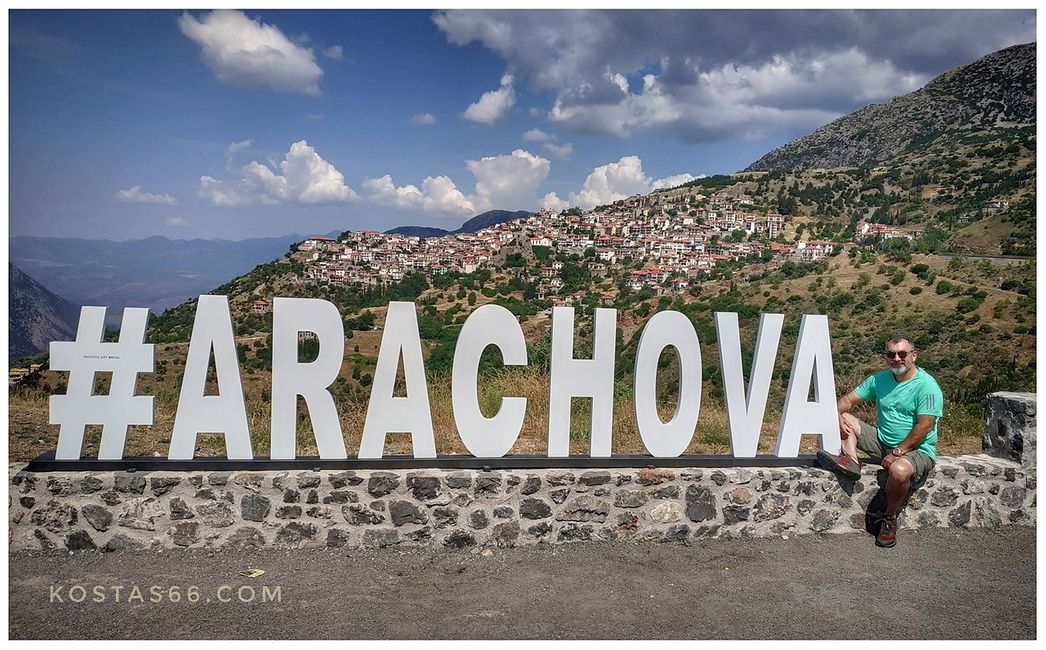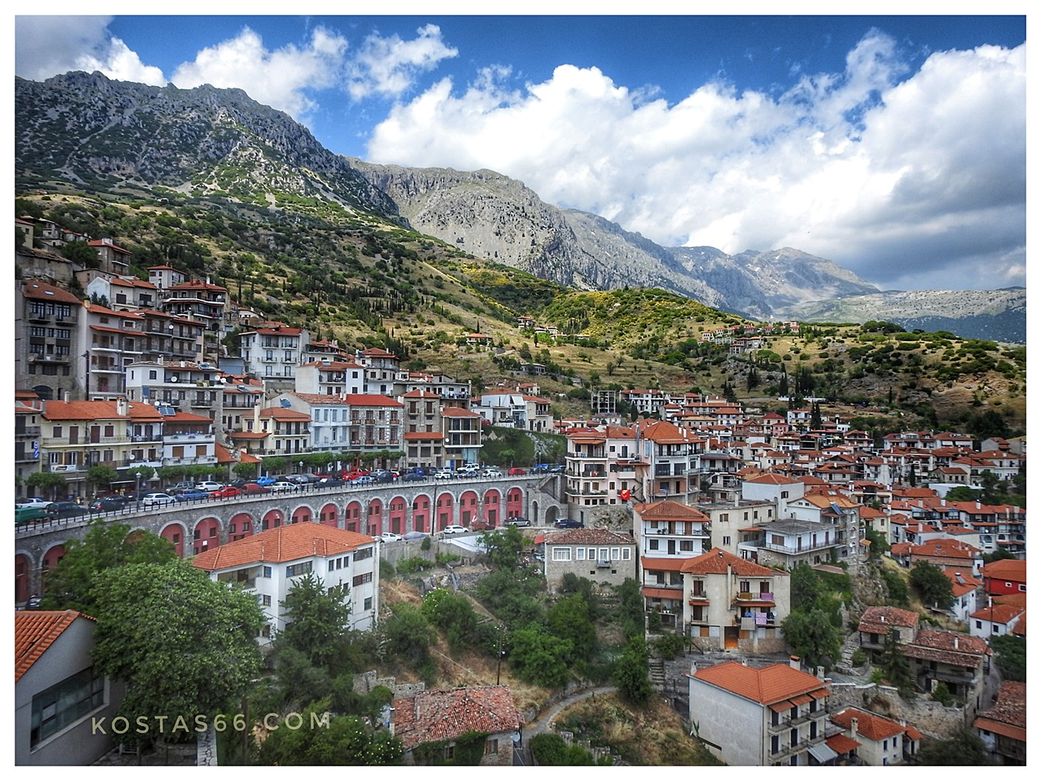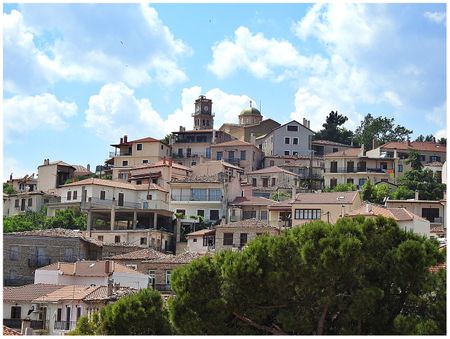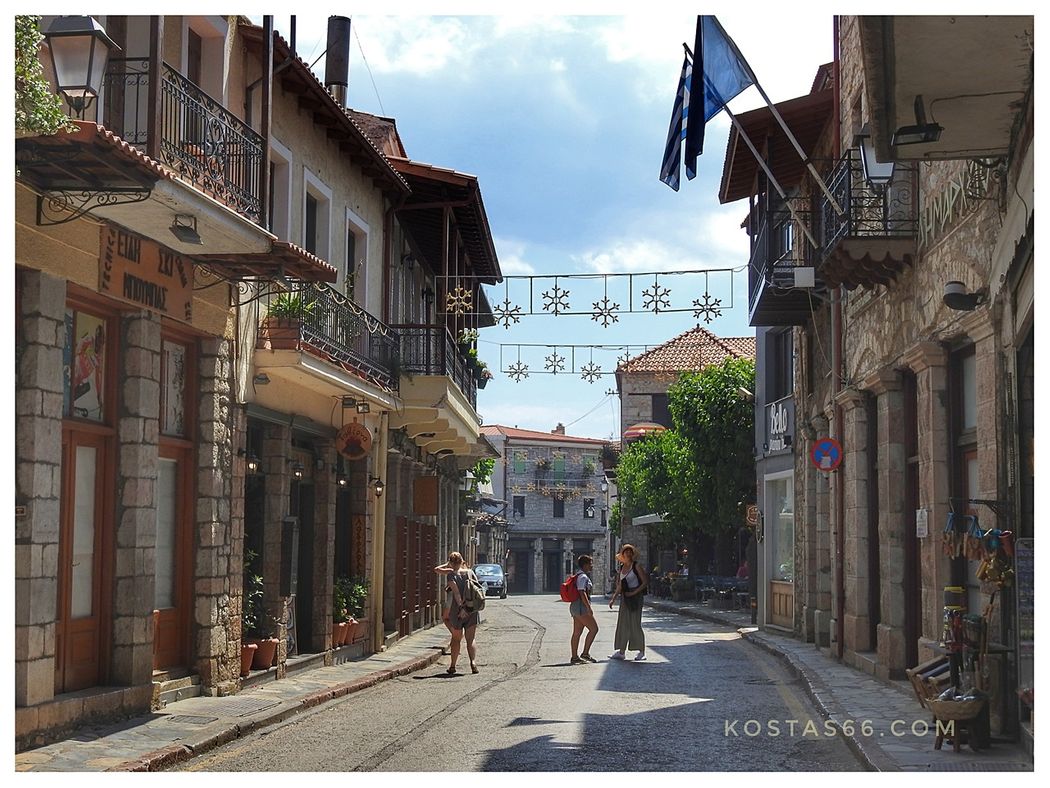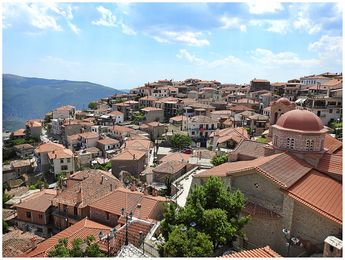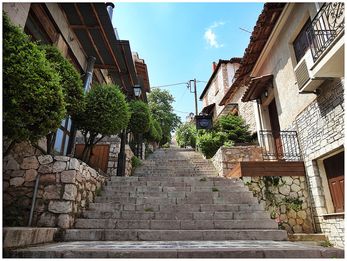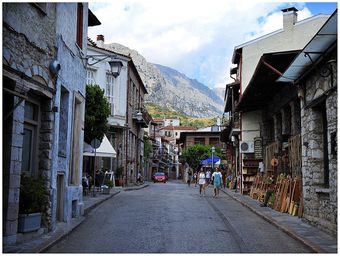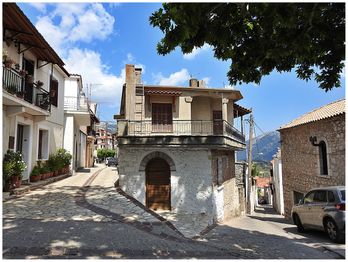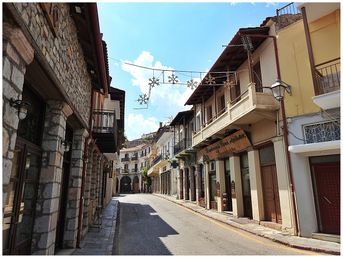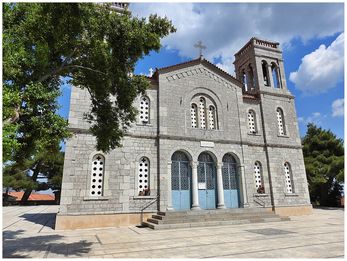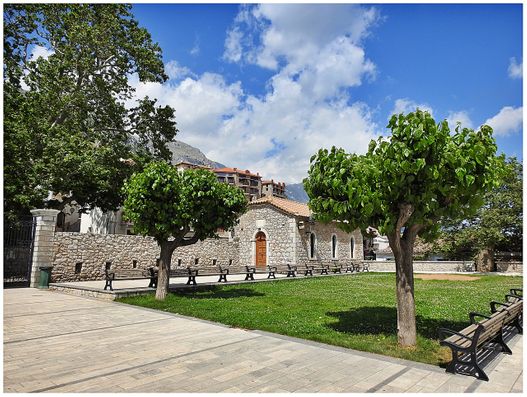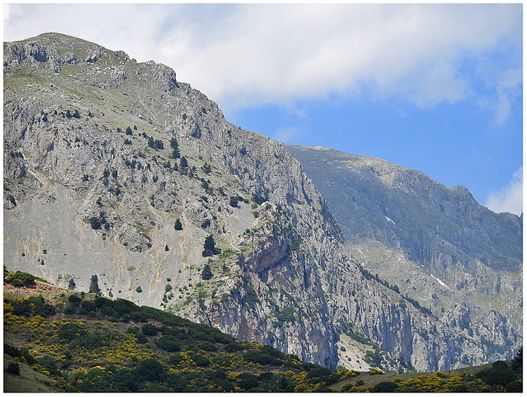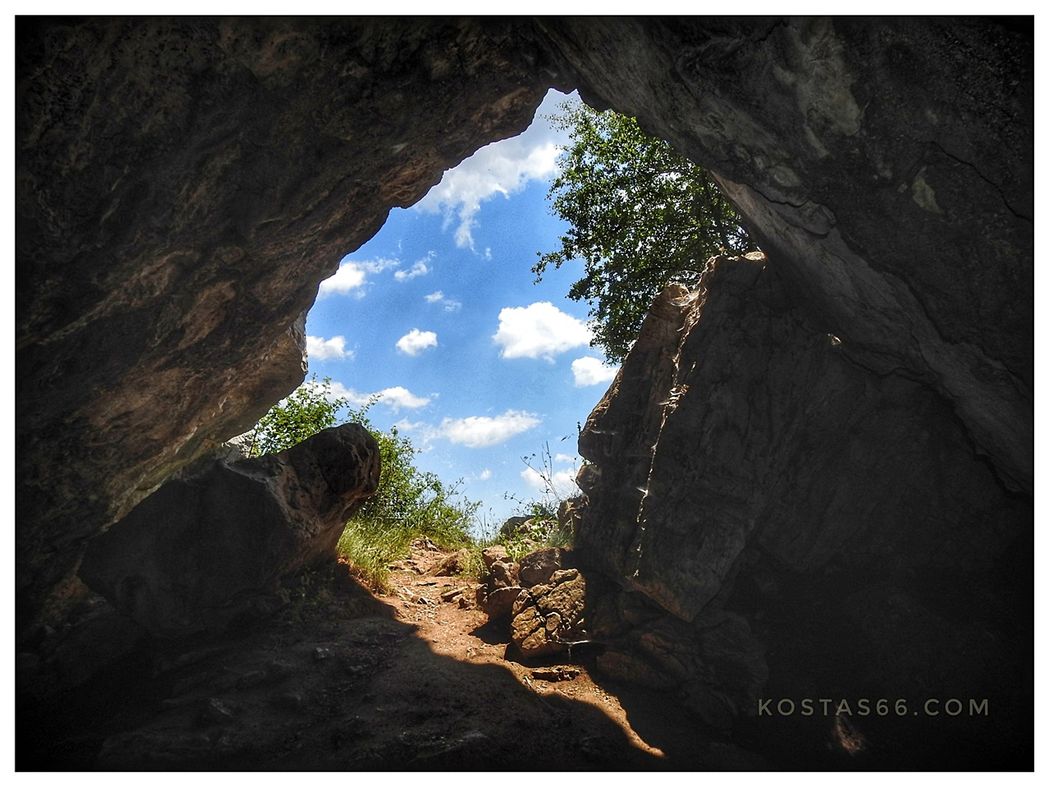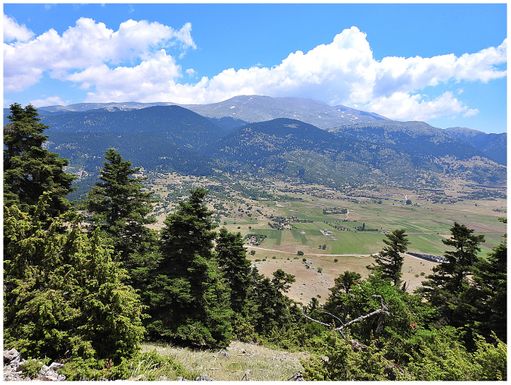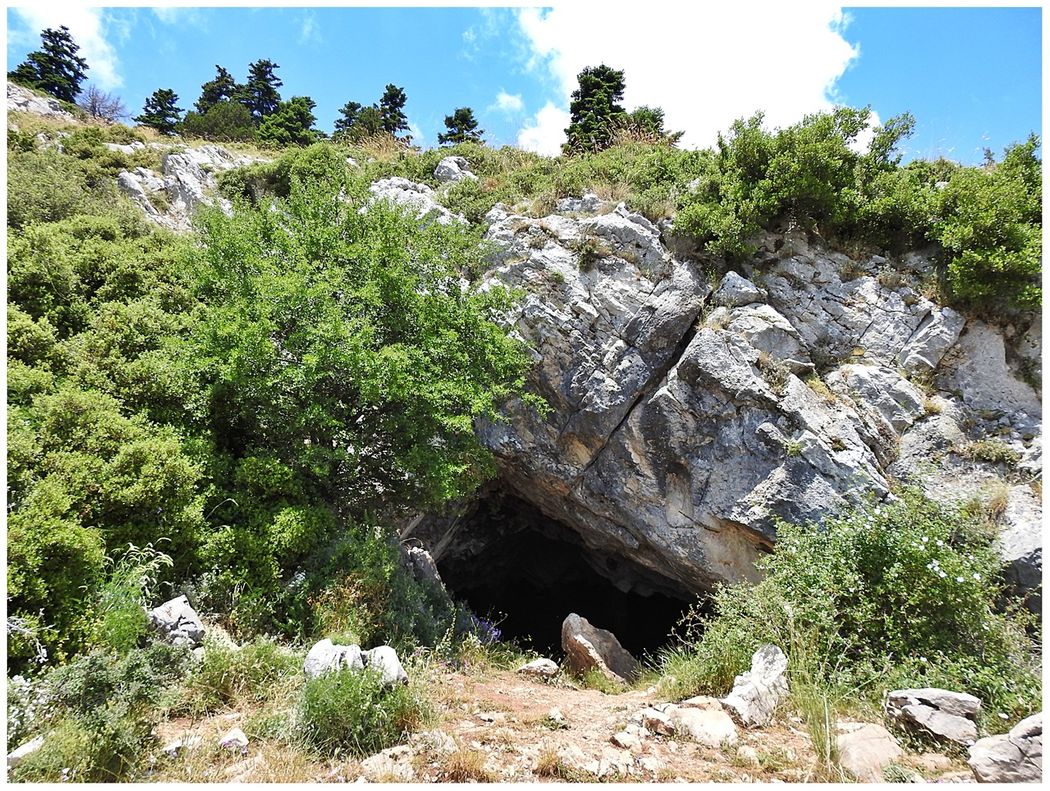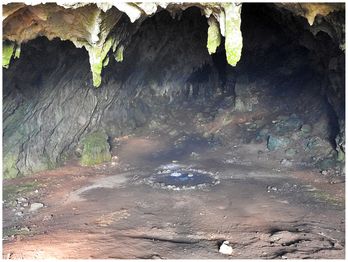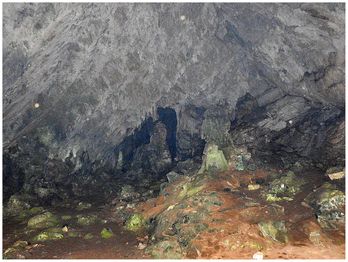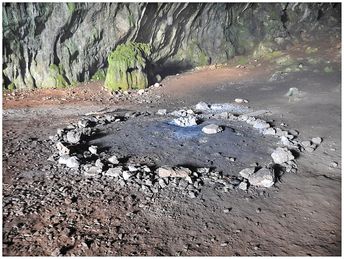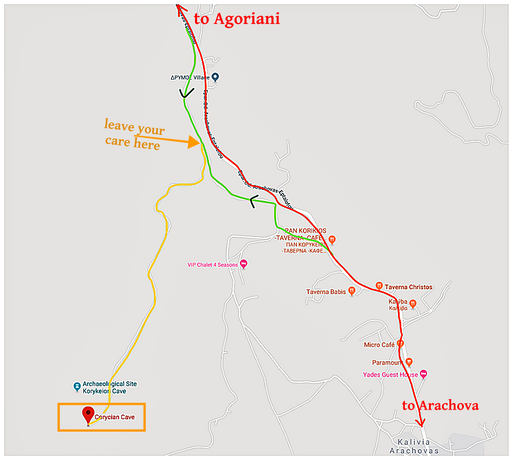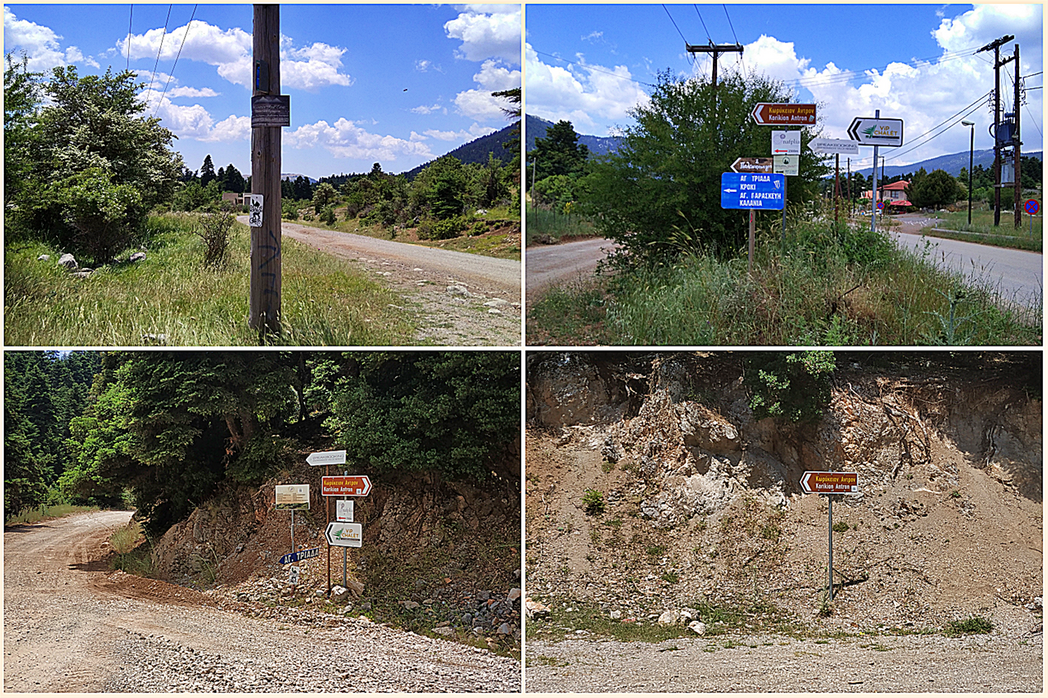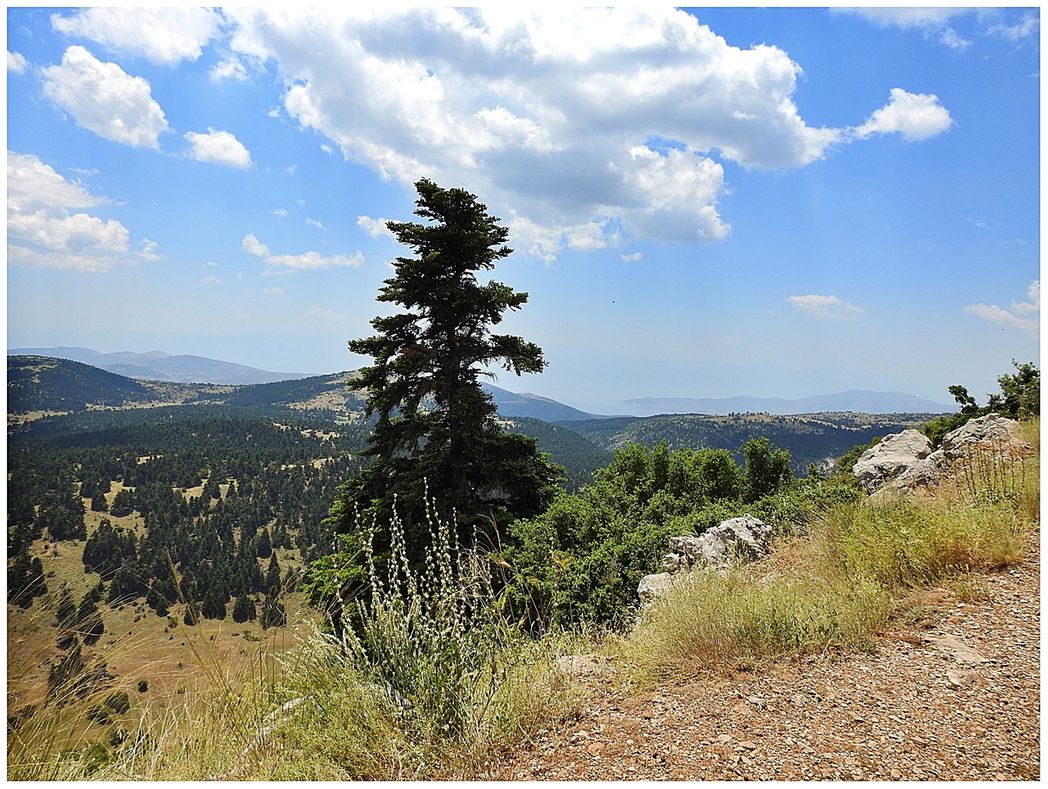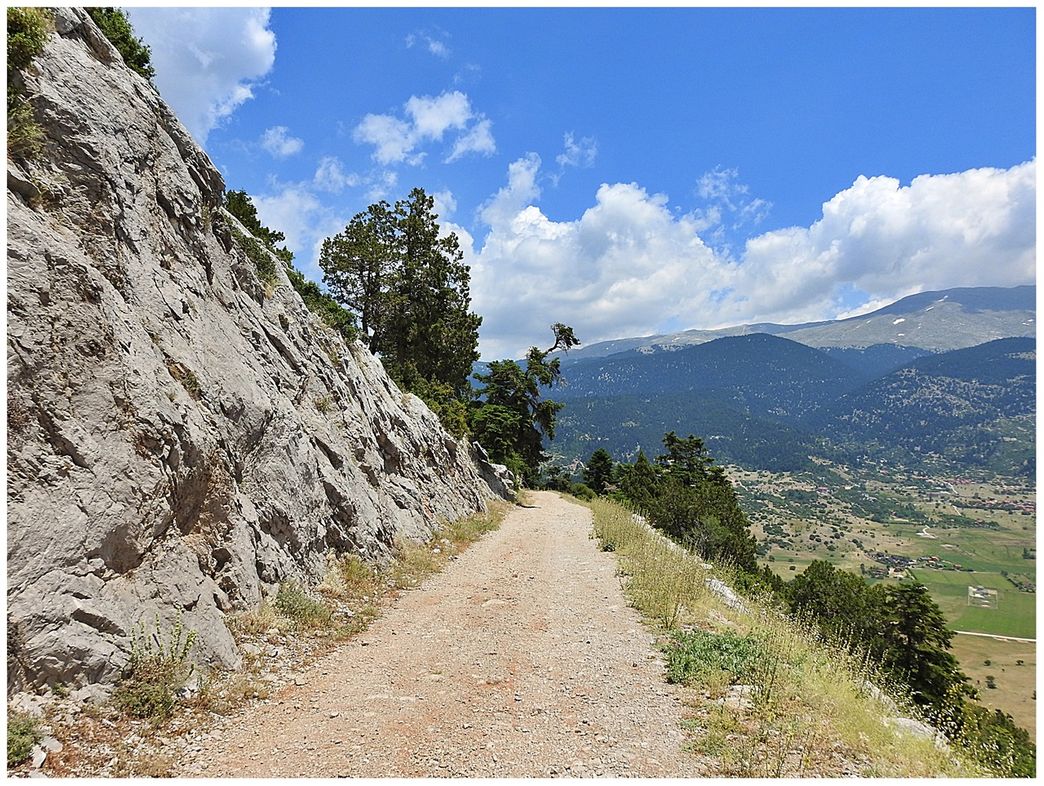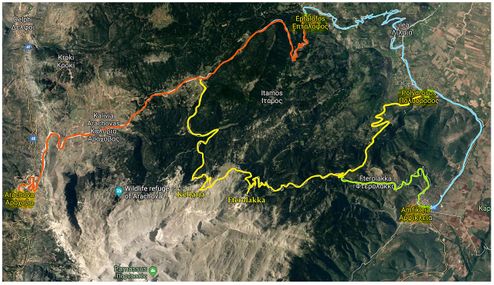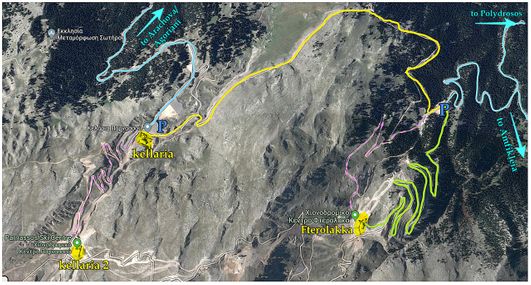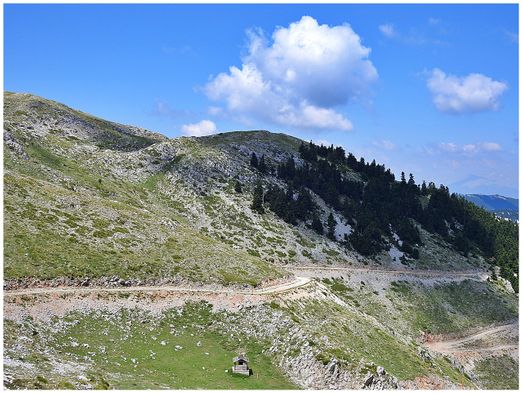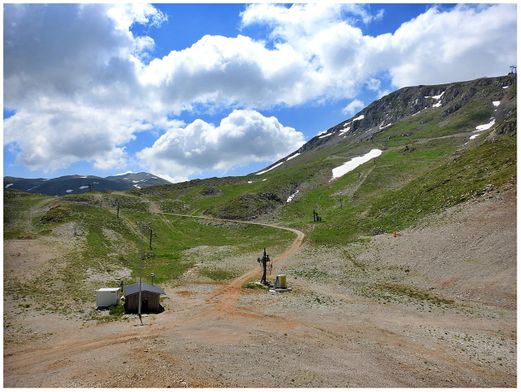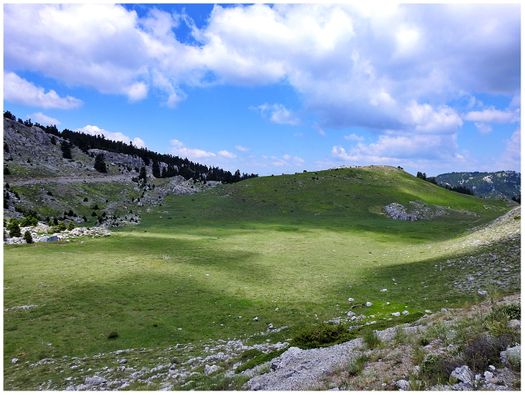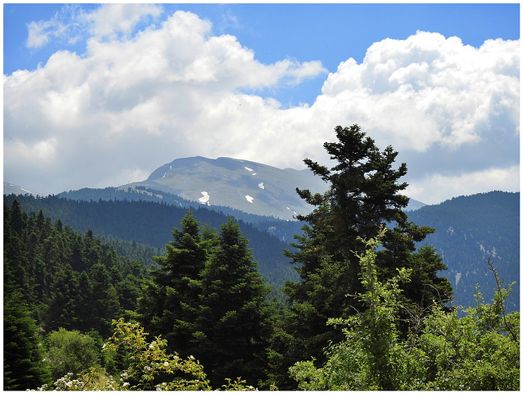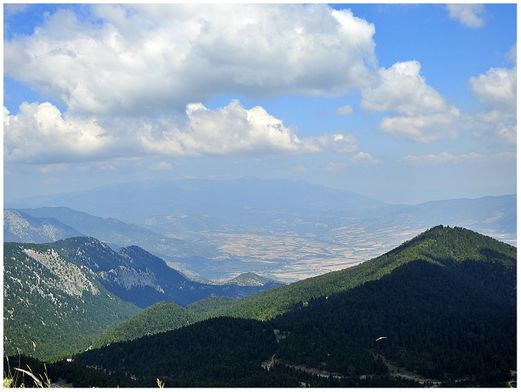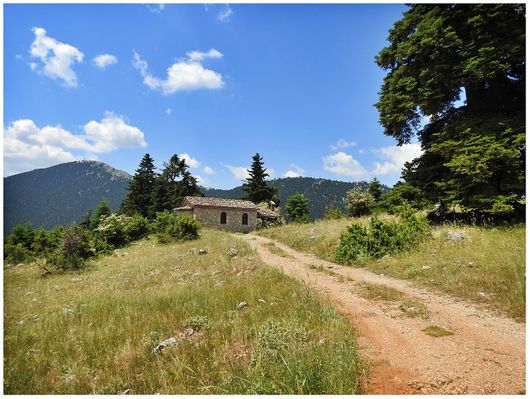Mount Parnassus
from Agoriani to Arachova.
June 2019
Mount Parnassus (Παρνασσός) is one of the largest mountainous regions of Mainland Greece and one of the highest Greek mountains (2,457 m). It lies in central Greece north of the Gulf of Corinth, mainly known for the Sanctuary of Delphi and as a popular winter destination for the Athenians. Besides Delphi, the most popular destination on the mountain is the town of Arachova (Αράχοβα).
Agoriani (Αγόριανη) village is also a popular winter destination, which I decided to visit during summer to escape from the Athenian hot summer nights. Agoriani is about 2.5 hours drive from Athens.
The location of Mount Parnassus on the map of Greece (left). The "limits" of the mountain (right).
The geological particularity of Parnassus is its rich deposits of bauxite, which has led to their systematic mining since the end of the 1930s, resulting in ecological damage to part of the mountain.
On the other hand, the significant biodiversity in flora and fauna led the authorities to establish the National Park of Parnassus in 1938 (the year when the systematic mining of bauxite started). At the slopes of Mount Parnassus operate two ski sections, Kellaria and Fterolakka, which comprise Greece's most extensive ski center.
Bauxite mining at the south of Mount Parnassus (near Itea).
"Mount Parnassus" by Edward Dodwell (1821).
Mythology
Mount Parnassus is named after Parnassos, the son of the nymph Kleodora and the mortal Kleopompus. Torrential rains flooded a city of which Parnassos was the leader. The citizens ran from the flood, following wolves' howling, up the mountain slope. There the survivors built another city and called it Lykoreia, which in Greek means "the howling of the wolves."
As the Oracle of Delphi was sacred to the god Apollo, so did the mountain itself become associated with Apollo. Parnassus was the site of the fountain Castalia and the home of the Muses. As the home of the Muses, Parnassus became known as the home of poetry, music, and learning.
While Orpheus was living with his mother, Calliope, and his eight beautiful aunts (the nine muses) on Parnassus, he met Apollo, who was courting "the flourishing" muse Thalia. Apollo became fond of Orpheus, giving him a little golden lyre and teaching him how to play it. Furthermore, Orpheus' mother taught him to make verses for singing.
Parnassus was also the site of several unrelated minor events in Greek mythology:
- In some versions of the Greek flood myth, the ark of Deucalion comes to rest on the slopes of Parnassus. This is the version of the myth recounted in Ovid's Metamorphoses.
- Orestes spent his time in hiding on Mount Parnassus.
- The Corycian Cave, located on the slopes of Parnassus, was sacred to Pan and to the Muses.
- In Book 19 of The Odyssey, Odysseus recounts how he was gored in the thigh during a boar hunt on Mount Parnassus in his youth.
- Parnassus was also the home of Pegasus, the winged horse of Bellerophon.
"Apollo on Mount Parnassus" (1510) by Sanzio Raphael.
The Parnassic movement
The Parnassic movement was established in France in 1866–1876 as a reaction to Romanticism with a return to some classicistic elements and belief in the doctrine "Art for the Art", first expressed by Theophile Gautier. The relation of the mountain to the Muses offered an instigation to its more recent "mystification", with the poetic-artistic trend of the 19th century called "Parnassism" (or Parnassianism). The periodical "Modern Parnassus", issued for the first time by Catul Mendes and Xavier Ricard, contained direct references to Mt. Parnassus and its mythological feature as the habitation of the Muses. The Parnassists, who did not exceed a group of twenty poets, exercised a relatively strong influence on the cultural life of Paris, mainly due to their tenacity in the perfection of rhyme and vocabulary. Parnassism influenced several French poets but also Modern Greek poets, particularly Kostis Palamas and Gryparis.
Portrait of Théophile Gautier by Théodore Chassériau.
The mountain's name (Mont Parnasse) was also given to a quarter of Paris on the left bank of the Seine, where artists and poets gathered and recited their poems in public.
Wood Engraving "Mount Parnassus and Delphi" (1890).
from Agoriani to Arachova
The most famous part of the mountain (besides Delphi) is the dipole “Arachova-Agoriani”, the two famous winter resorts. They stand at the two ends of a high plateau: Agoriani (Ano Agoriani, to be more precise; aka Eptalofos) is located in a dense forest north Arachova is located on the relatively dry north side of the plateau. 25 km (30min) of a good paved road connects the two resorts. These two towns are the gateways to the Parnassos Ski Center. On the plateau, a dirt offshoot of the main road leads to the famous Corycian Cave (Κωρύκειον άντρο).
The dipole Arachova-Agoriani.
Agoriani
Agoriani (Αγόριανη) is a small village built on a slope in the north of the region. Even though, since 1928, the official name is Eptalofos (Επτάλοφος), Agoriani is the name everyone uses. The village is drowned in green with firs, plane trees, walnut trees, chestnuts, and cherries which compose a beautiful natural landscape like no other. It instantly gains anyone who “slips through the net” of popular Arachova. The outskirts of the village blend into the dense pine tree forest that covers the area. Agoriani is a place for all seasons, as it offers the visitor all the joys of the mountain, with different “colors and aromas” for every season. Still, its peak season is winter, when everything is covered in thick snow.
The central square in Agoriani is the perfect spot to enjoy iced coffee and the delicious local brand (Αγνή) lemonade.
The strolls at the alleys of Agoriani are so delightful, and they are accompanied by the sound of the waterfall, the bells of the flocks, and the chirp of the birds. The main attraction of the village is the small but excellent central square. Four giant plane trees cast their heavy shadow on cafés and restaurants here. This is the perfect place to escape the heat of the summer months in Greece. By the square runs a stream of cold water. You can not miss it as its loud sound will undoubtedly lead you to it. Following the waters upstream will soon reach the famous “Agoriani waterfalls” in dense vegetation.
Do not expect anything huge; the waterfalls are from some meters only. The fantastic thing here is that the waters have created a microenvironment rich in flora and fauna, and by fauna, I mean lots of beautiful (and not-so-beautiful) insects, not wolfs and bears! What surprises the visitor is the temperatures here, much lower than the ones some meters away on the square: the running waters are icy as they originate from the melting snow and springs high on the mountain.
Agoriani waterfalls.
The stream running from the waterfalls to the central square of Agoriani.
The main square of Agoriani.
The path (by the stream) leading to the waterfalls.
While in Agoriani, we stayed at a lovely little hotel called “Asimina Guesthouse”. The rooms are well-designed and comfortable, and the lady who runs the place is very gentle and always willing to help and give you any information you need.
Agoriani fauna.
"Γκρίζα Αρκούδα" tavern
The real gem, though, of the village is a little culinary miracle. There is no way to mention that you are going to visit the area without someone telling you that "you must go to the "Γκρίζα Αρκούδα" (Gray Bear) for dinner".
The main building of the "Γκρίζα Αρκουδα" (top), and the courtyard across the street (bottom).
The "Γκρίζα Αρκούδα" logo on a plate.
I am always “suspicious” of this kind of recommendation because they are usually referred to as just fashionable places, where you go to see and be seen and not to enjoy a delicious meal, or they are so expensive, I’d rather have a gyro takeaway instead. This is not the case, though; we ended up having dinner there every evening we spent in the area! The dishes are delicious; you will enjoy well-cooked or roasted meats, local cheeses, and vegetables. The Gray Bear’s main room is heavily (in a pastoral way) decorated and has windows all around, so you can enjoy the mountains while you relish your meal. This is your only choice during winter, but during summer, they also open a big garden, just opposite the main building, where you dine or lunch under substantial walnut trees.
The only "drawback" (if we can call it a drawback) is that all main dishes are cooked with meat, no vegetarian main courses. We are in a stock-raising area, where meat and dairy products are of excellent quality. But again, who cares?
The interior of "Γκρίζα Αρκούδα" is pleasant and cosy, with windows all around.
From the menu of "Γκρίζα Αρκούδα" restaurant: local wine, wild boar with mushrooms and pasta, and porkchop.
From the menu of "Γκρίζα Αρκούδα" restaurant: stuffed onions with minced beef and rice, beetroots, meatballs and fries, and saganaki (fried) cheese.
From the menu of "Γκρίζα Αρκούδα" restaurant: pork with plums and pasta, beetroots & greens, stuffed pita bread with pork and cheese, and local sausage with fries.
The trail from Agoriani main square to the chapel of Trinity.
Trails
The area is a walker's paradise. From Agoriani, one can follow many trails. Famous European trails, like the E4-Agoriani-Delphi or E22-Agoriani-Polydrosos (Souvala), cross or start here. E4 is the most famous path of Parnassus. A classic long-distance route (15.6km, about 7 hours walking), the well-known European Route E4 crosses Parnassus and connects Delphi with Agoriani. The route is part of the ancient path that united Delphi with Ancient Lilaia, north of Agoriani. The easiest of all the local trails is the 2.2km one, which starts from the Agoriani central square and ends at the chapel of Holy Trinity (Αγία Τριάδα). The usually closed chapel is new and of no architectural or historical interest, but one can rest here end enjoy nature at its best. The lazy ones can drive here, but be careful and drive slowly if you do not want to end up with a broken car.
The glade in front of the chapel of Holy Trinity.
The chapel of Holy Trinity.
The beautiful local landscape.
The clock tower of Arachova. The clock is located at the backyard of the Folklore Museum of Arachova, and irs access is through the museum gates.
Arachova
The real star of the area is Arachova. Its name is of South Slavic origin and denotes a place with walnut trees. Arachova is a big, rich, and beautiful town, but also an actual victim of over-tourism. Arachova is for winter, while Mykonos is for summer. The town is so crowded during winter, with skiers and thousands of Athenians who starve for some snow-covered mountainous landscape. The place is overdeveloped, and ugly winter chalets spring here and there, where green pastures or pine-covered slopes used to be. During the period of bliss and luscious living in the 90s and 00s, everyone who wanted to be “respected” and welcomed into the high society should possess a chalet here and an island house on Mykonos. Those days have gone but left behind ugly building complexes and a wounded South Parnassus.
#Arachova. Arachova at the background.
However, it would be unfair to state only the damaging elements. Arachova has managed to maintain much of its traditional characteristics as a wealthy historical town. Many old houses have been restored and maintained, the culinary scene has been improved significantly, and new, more sophisticated shops are spread mainly along the main road that divides the town into the upper and the lower town.
Arachova. Picture taken from the clock tower. Parnassus at the background
Arachova is not a long-holiday destination, but it is more like a weekend break destination. For many people, it is just a stopover for lunch or coffee on their way from Athens to Delphi and back. If you have only a few hours to spend here, I strongly recommend having your coffee and pastry at “Cafe Dimakis”, which has the best views of all the cafes in town. If lucky, grasp one of the only two tables on the small veranda overlooking a gorge. Of course, many other cafés and restaurants have views to enjoy.
The upper part of Arachova seen from the clock tower.
The main road of Arachova.
The lower part of Arachova seen from the clock tower.
Typical stairs-road of Arachova.
The main road of Arachova.
Typical neighborhood of Arachova.
The main road of Arachova.
The Church of St George at the upper side of Arachova.
The courtyard of the Church of St George.
Corycian Cave
Parnassus seen from Arachova.
Between Arachova and Agoriani, just some km off the road connecting the two towns stands the Corycian Cave (Κωρύκιον ἄντρον / Korykion antron). The cave is named after the nymph Corycia (Κωρύκεια); however, its name etymologically derives from korykos, "knapsack made of animal skin". In some references, a modern name for the cave is Sarantavli, meaning "forty rooms".
The entrance to Corycian Cave (photo taken from the inside).
The cave has two main halls and continues further with a narrow tunnel. The first chamber has a height of 50 meters and dimensions of about 90 by 60. It is full of stalactites with some stalagmites in the periphery. One of them, with a reasonably large surface area, is called "table", and it is speculated that here the pilgrims who flocked to the cave throughout antiquity placed their offerings. This first hall has enough natural light to explore, but I would not recommend proceeding further without a good light source.
View from the road going up to Corycian Cave.
This cave was sacred to the Corycian Nymphs and the Muses and a place of worship for Pan (the god of the wild, shepherds and flocks, nature of mountain wilds, rustic music and impromptus, and companion of the nymphs). According to the myth, Apollo seduced the nymph Corycia, and she gave birth to her son, Lycorus. Traditionally, the cave was a refuge for the surrounding population during foreign invasions, e.g., from the Persians in the 5th century BC, the Turks during the Greek War of Independence, and the Germans in 1943.
The opening (entrance) to Corycian Cave.
Inside the Corycian Cave.
How to reach the cave.
A) from Agoriani: drive 12 km from the village center towards Arachova. Turn right to a dirt road just opposite a two-story building with a brown road sign that writes: "εν λευκώ - ski rentals". Unfortunately, there are no proper road signs to lead you there. Drive for about 300m till you reach a road fork. I recommend you leave the car here and continue on foot. With a 4x4 car, it is possible to drive to the cave, but it depends on how much you want to damage your car. The uphill road to the cave is about 3km long (about 40min). At the end of the road are some steps, and a short path takes you to the cave entrance.
From Agoriani there are no signs to Corycian Cave (top left picture, shows the right turn into the dirt road). From Arachova there are several signs (all three pictures) towards the Cave.
B) from Arachova: drive towards Agoriani, pass by Kalivia Arachovas, and after 2km driving (10m before you see Pan Korikios Taverna-Cafe-MiniMarket on your right) turn left on a dirt road that initially goes parallel to the main road. Follow the signs, and you will find yourself at the place I recommend to leave your car (see above). Continue as in case A above.
The view from the Corycian Cave.
In his 'Geography', Strabo writes: "The whole of Parnassos is esteemed as sacred [to Apollon] since it has caves and other places that are held in honor and deemed holy. Of these, the best known and most beautiful is Korykion, a cave of the Nymphai bearing the same name as that in Kilikia [in Asia Minor]".
The ancient greek traveler Pausanias in his 'Guide to Greece, writes: "On the way from Delphi to the summit of Parnassus, about sixty stades distant from Delphi, there is a bronze image. The ascent to the Corycian cave is easier for an active walker than for mules or horses. I mentioned a little earlier in my narrative that this cave was named after a nymph called Corycia, and of all the caves I have ever seen, this seemed to me the best worth seeing... But the Corycian cave exceeds the size I have mentioned, and it is possible to make one's way through the greater part of it even without lights. The roof stands at a sufficient height from the floor, and water, rising in part from springs but still more dripping from the roof, has made visible the marks of drops on the floor throughout the cave. The dwellers around Parnassus believe it to be sacred to the Corycian nymphs, especially to Pan".
The final part of the road/trail leading to Corycian Cave.
Parnassus ski resort
Both sections of the ski resort, Kellaria (Κελλάρια) and Fterolakka (Φτερόλακκα) can be reached from the road, which connects Arachova to Agoriani. From Agoriani, drive for 12 km on that road and then turn left for another 10km to the first section, Kellaria (1750m). The roads are well-signed, as people come here mainly to visit the ski resort. One can leave his car there and take the lift for the higher facilities (1950m). A lift connects the Kellaria facilities with the other section, Fterolakka (1850m). Alternatively, the two sections are connected by a 6 km-long road. The car parking of Fterolakka is at 1650m, and from there, a lift takes visitors up to the 1850m facilities. There is a road that goes all the way up if one wants to drive, but it is in poor condition and full of giant potholes.
Red line: Arachova-Agoriani road. Blue line: Agoriani-Polydrosos-Amfikleia road. Green line: Amfikleia-Fterolakka road. Yellow line: Polydrosos-Fterolakka-Kellaria-Agoriani road.
Purple lines: on foot roads only. Yellow line: Kellaria-Fterolakka road. Green line: from car park to Fterolakka road (with caution due to the state of the road).
During summer, the lifts do not operate, and everything is closed and looks neglected, but the mountains' views are lovely and worth the short drive up here. Fterolakka is easier to be reached from the town of Amfikleia or Polydrosos village.

